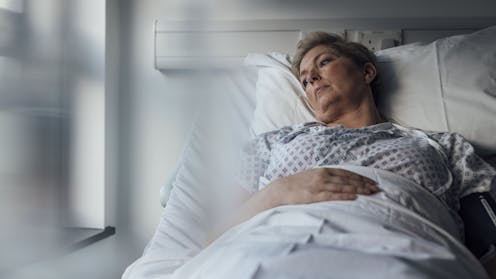Paramedics are less likely to identify a stroke in women than men. Closing this gap could save lives – and money
- Written by Lei Si, Associate Professor in Health Services Management, Western Sydney University
 SolStock/Getty Images
SolStock/Getty ImagesA stroke happens when the blood supply to part of the brain is cut off, either because of a blockage (called an ischaemic stroke) or bleeding (a haemorrhagic stroke). Around 83% of strokes are ischaemic.
The main emergency treatment for ischaemic strokes is a “clot-busting” process called intravenous thrombolysis....





